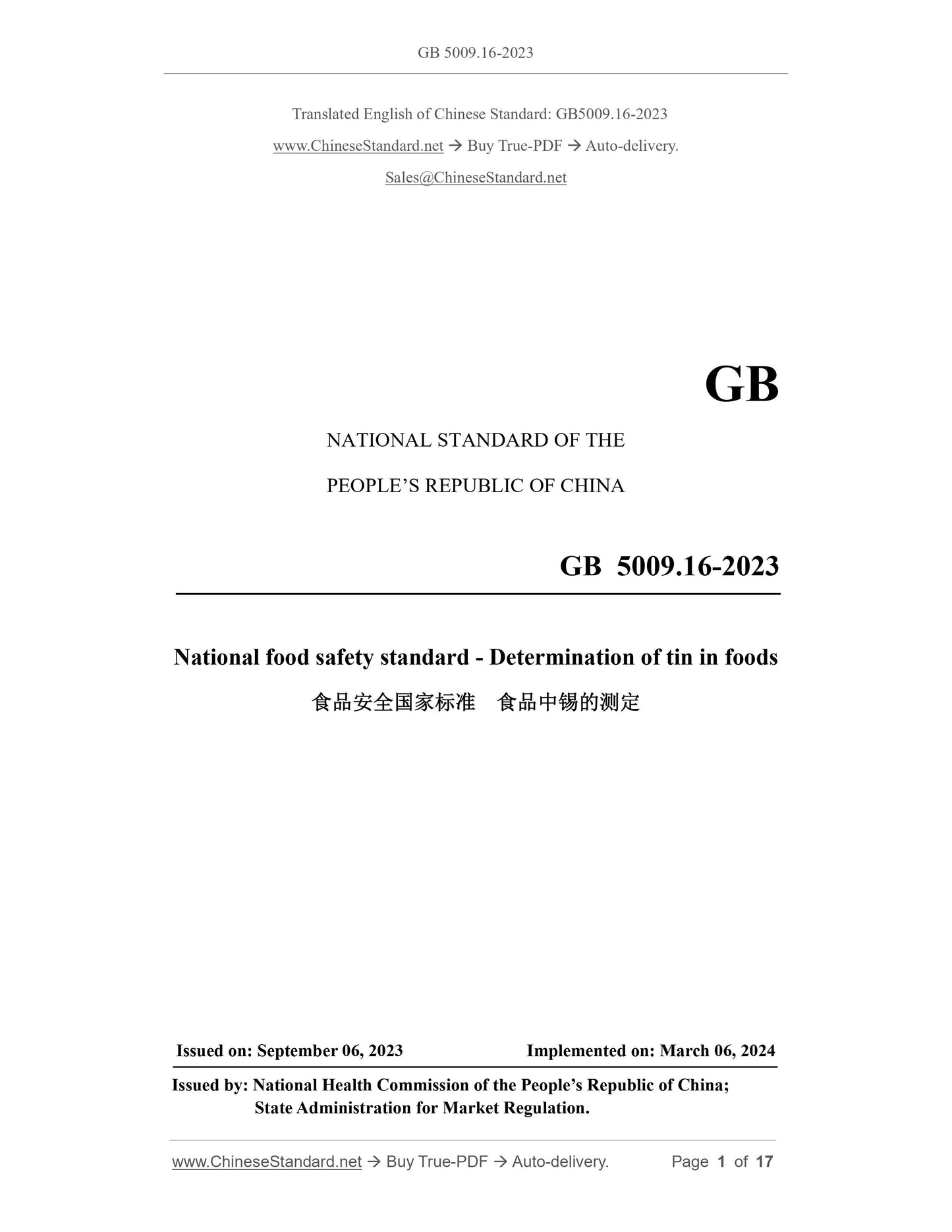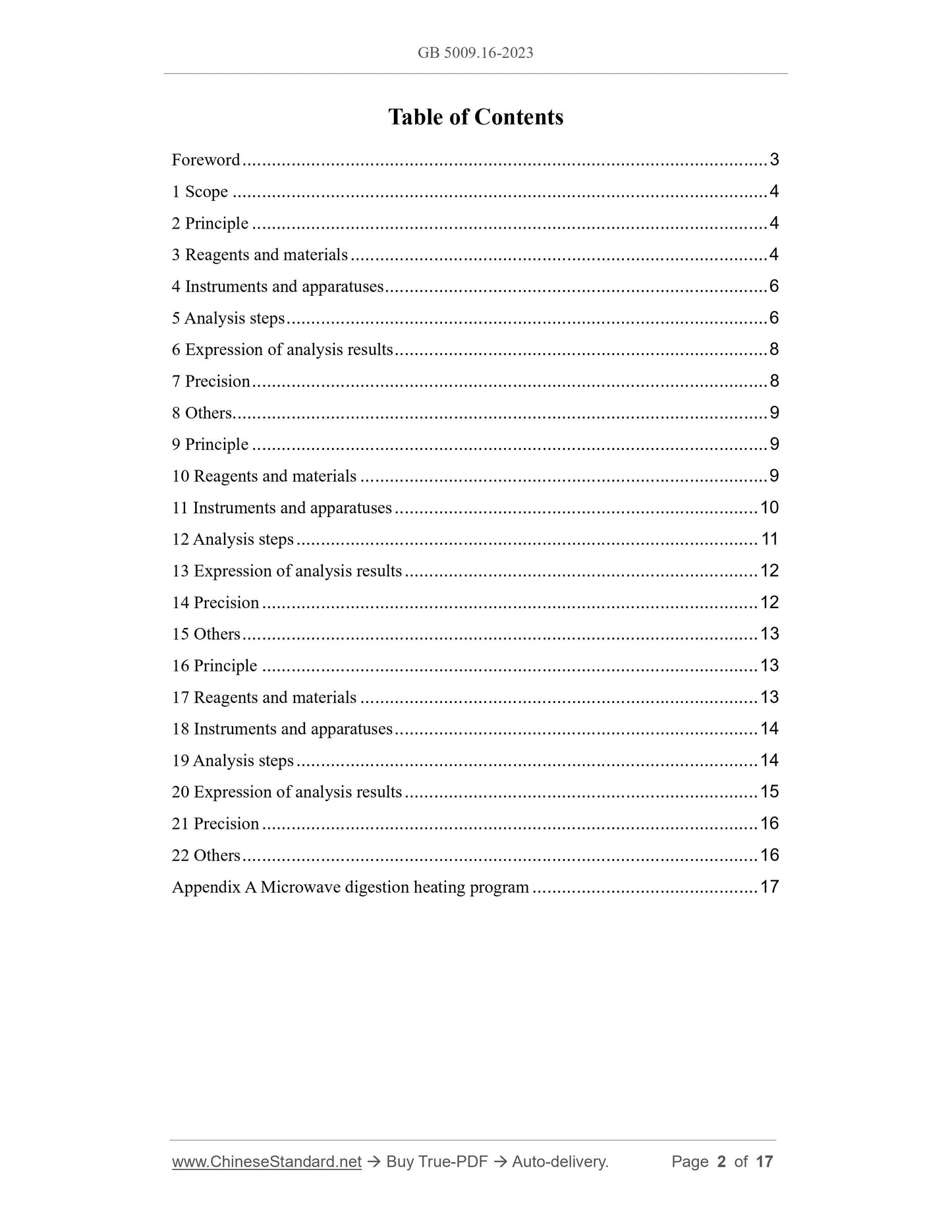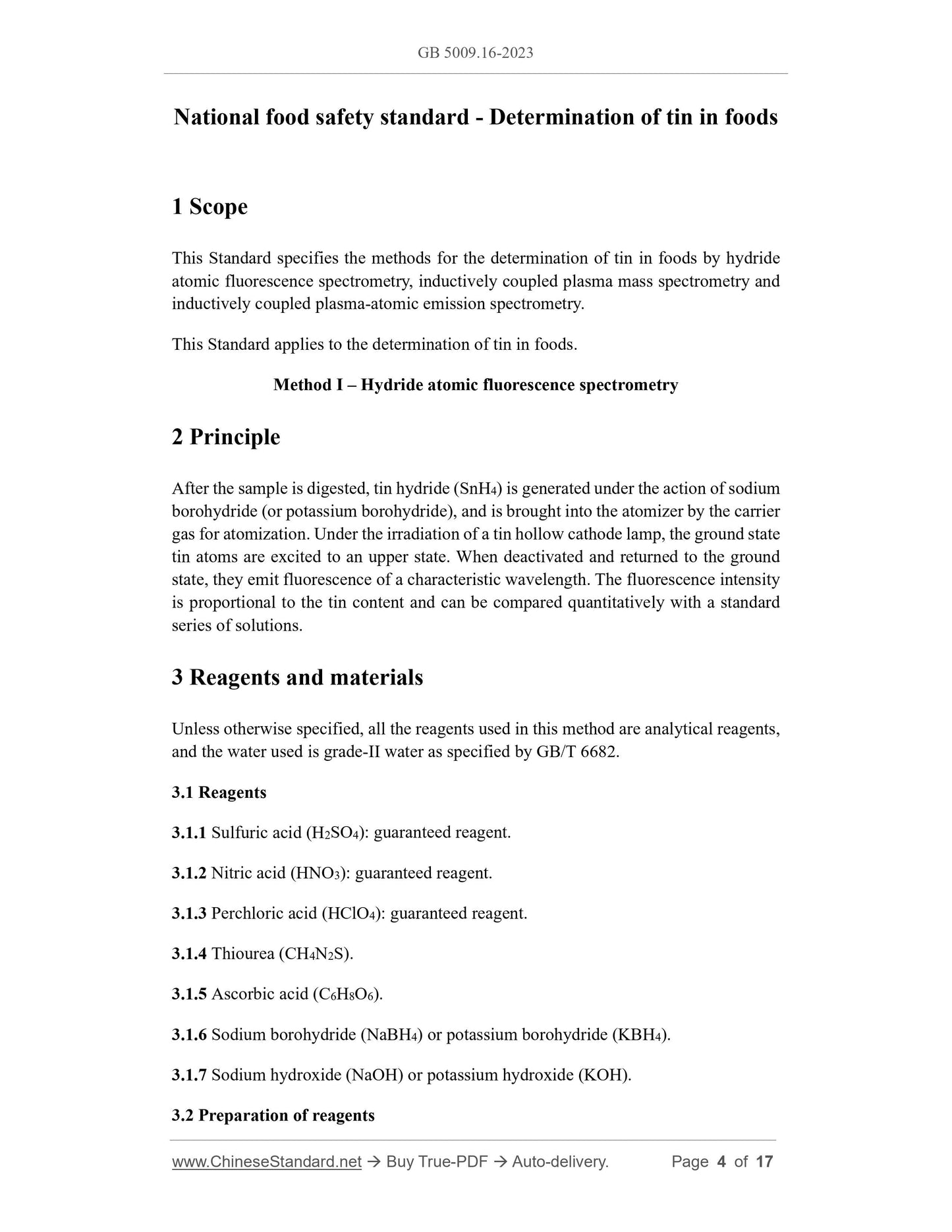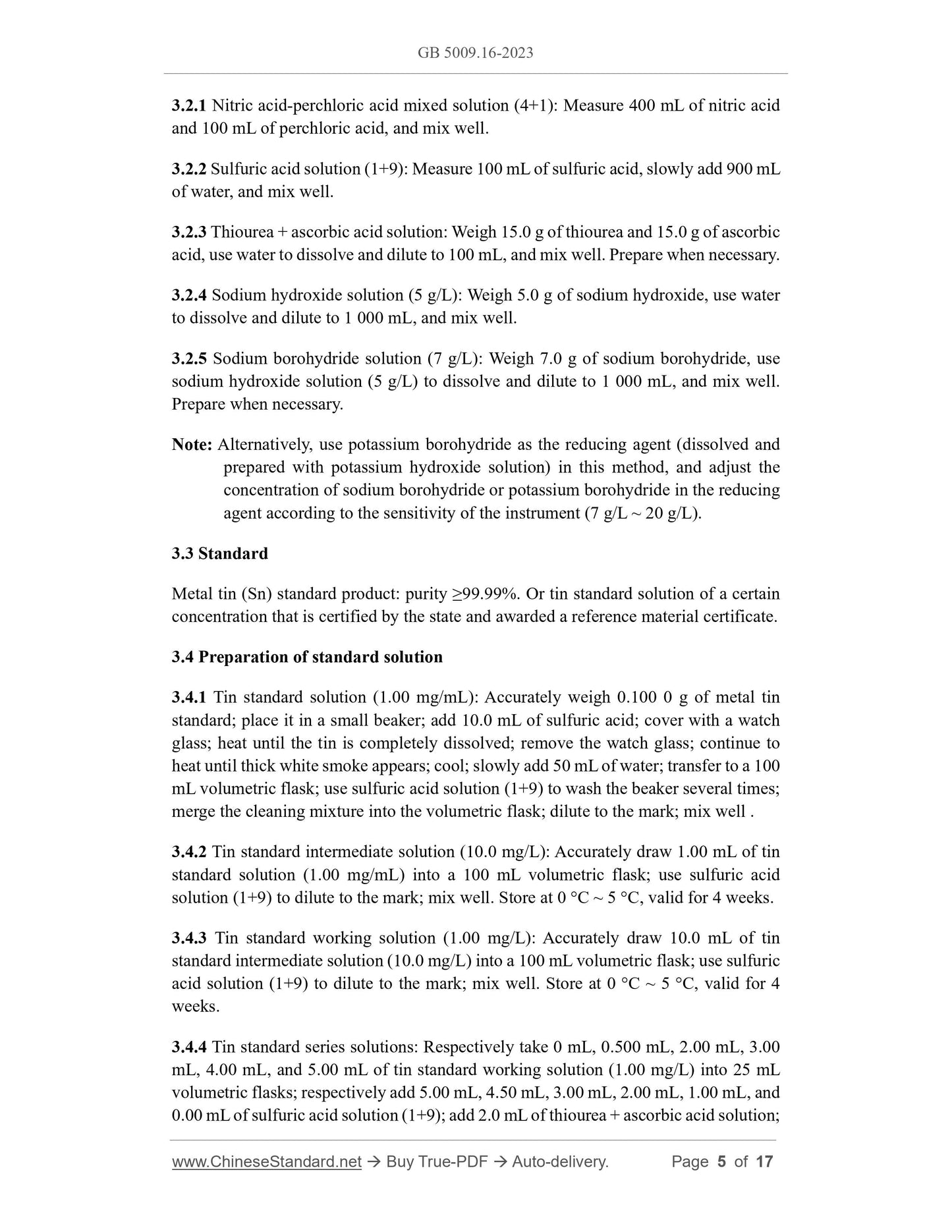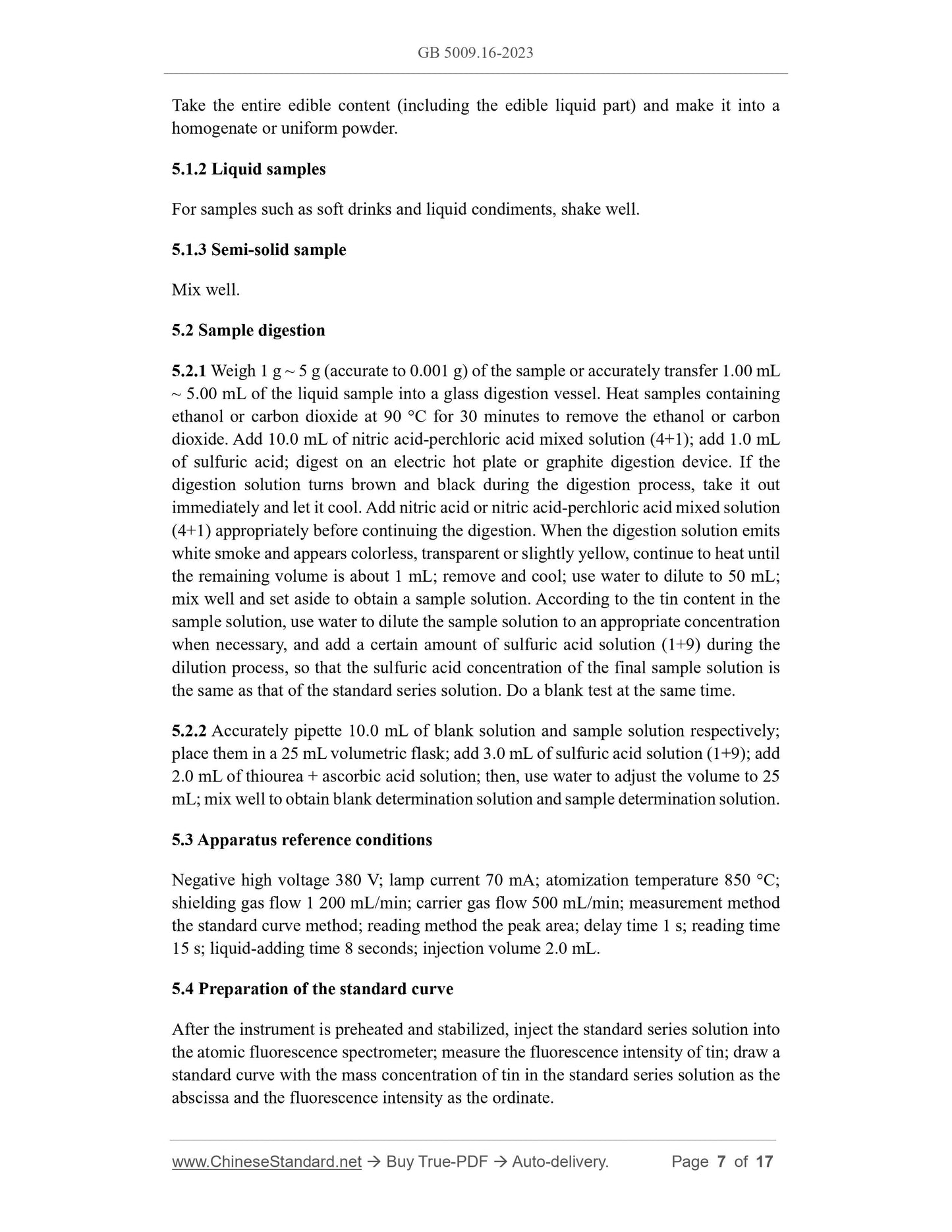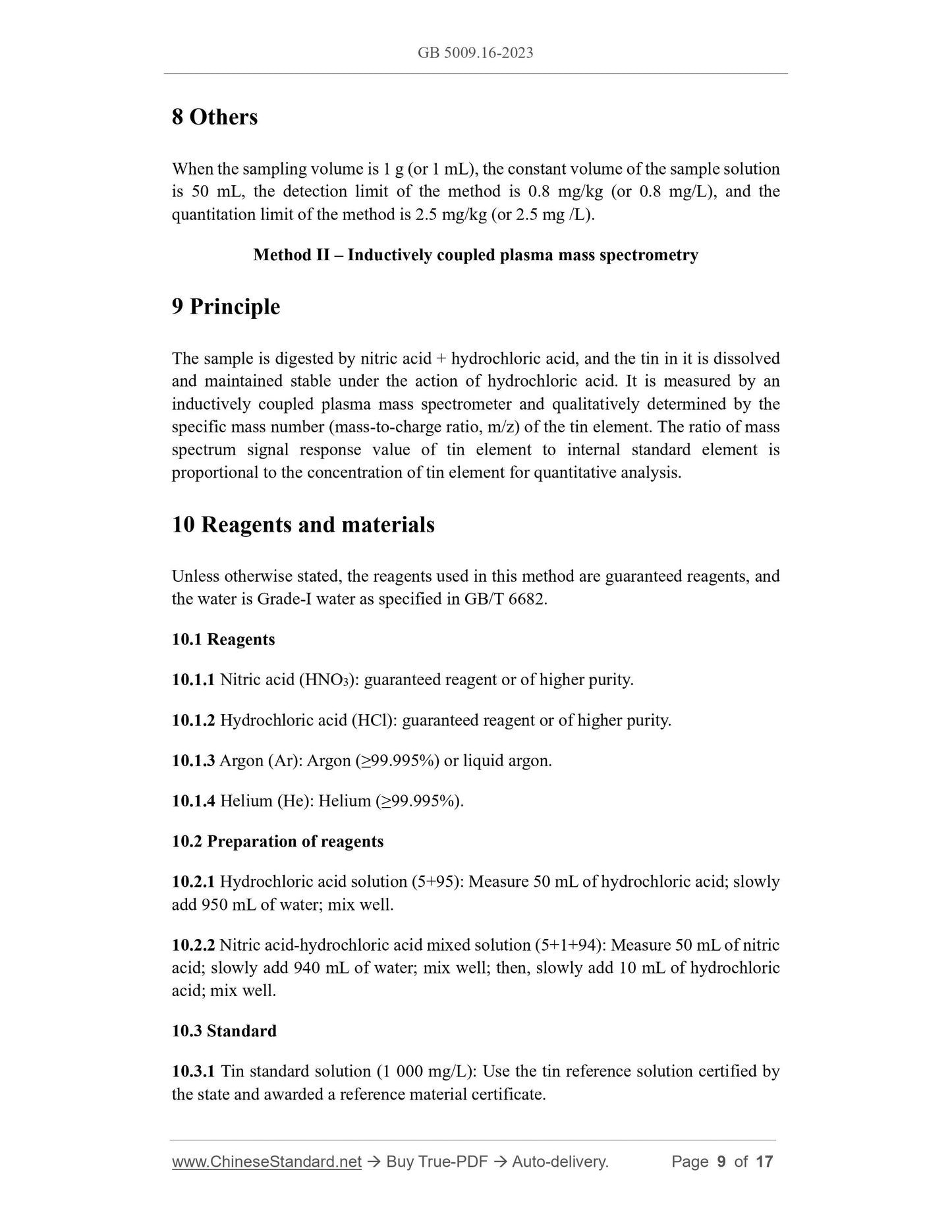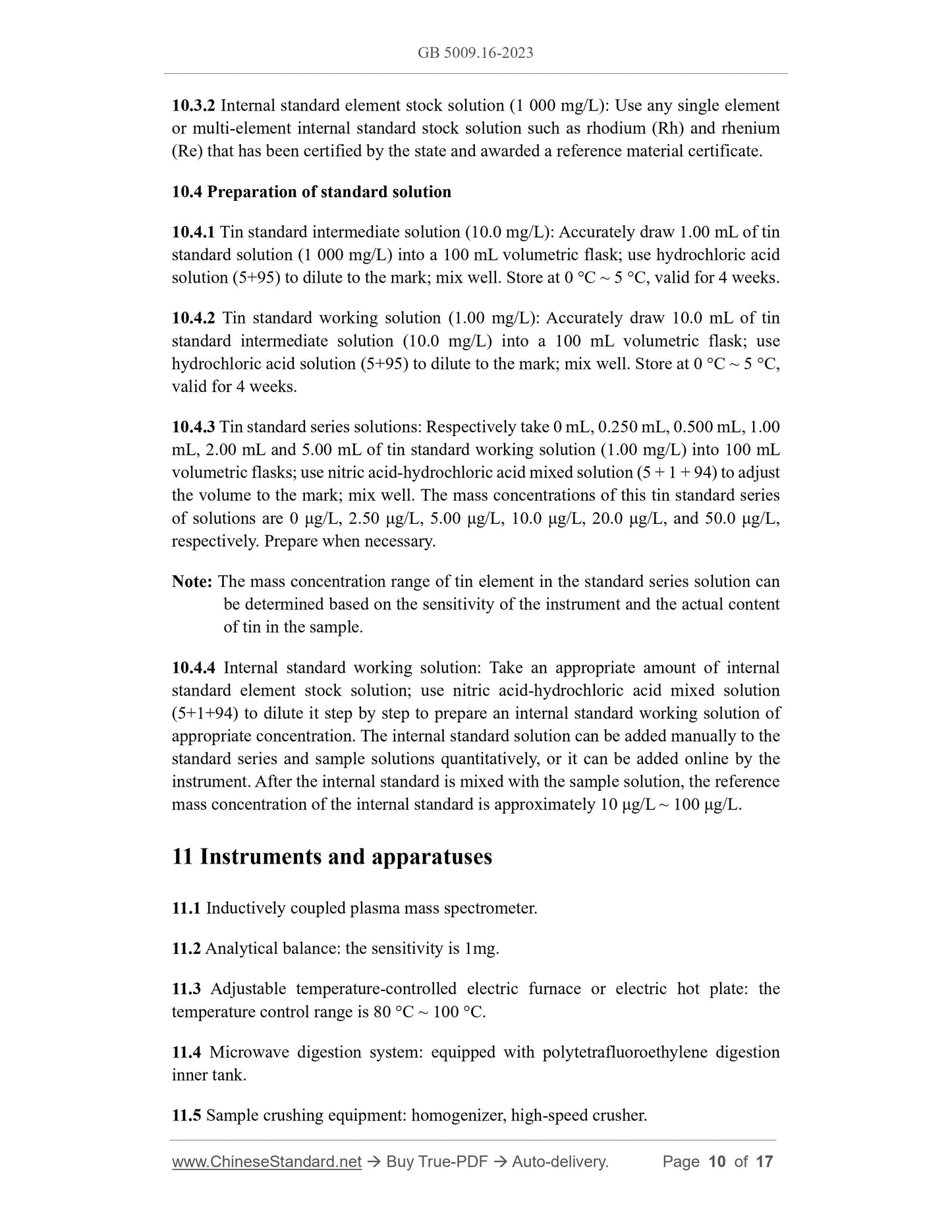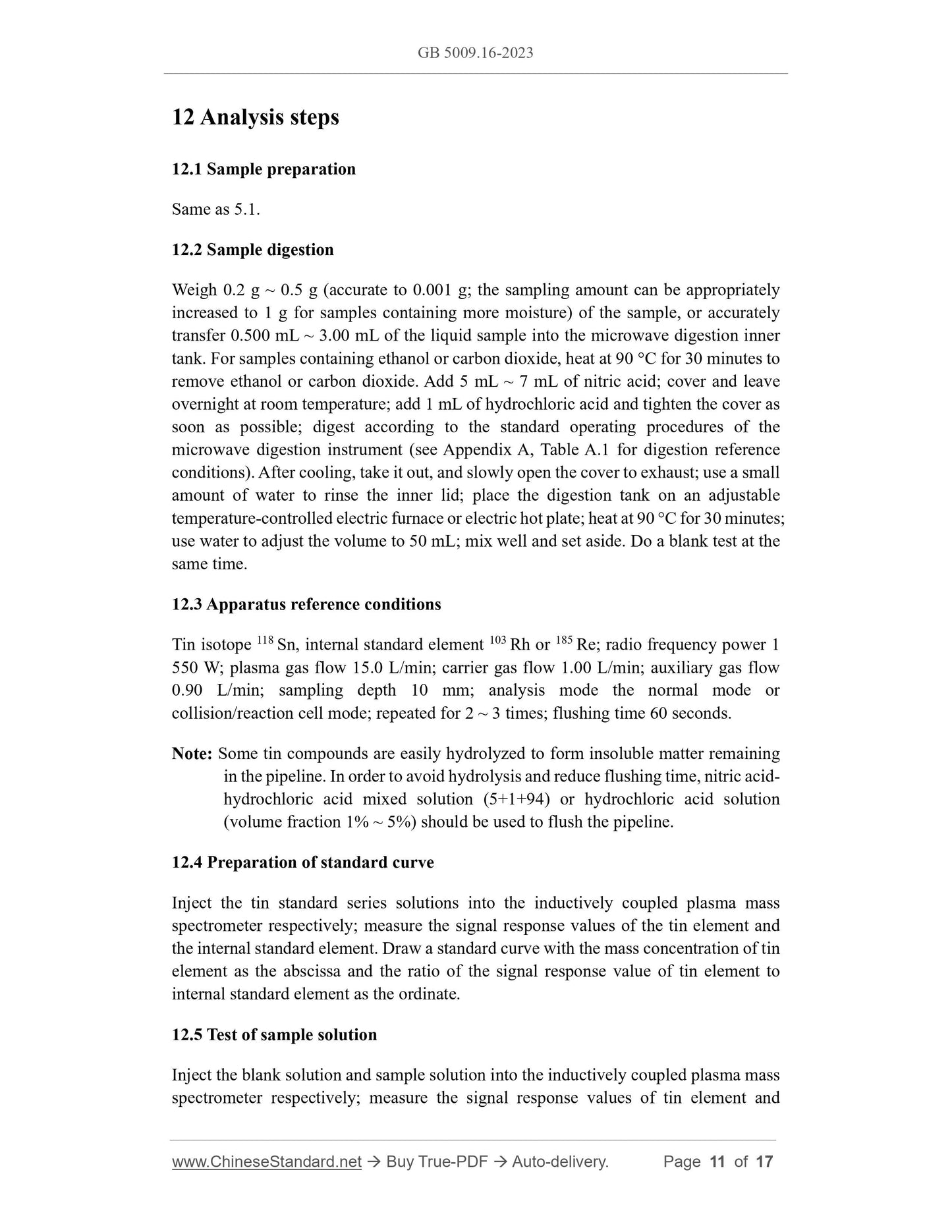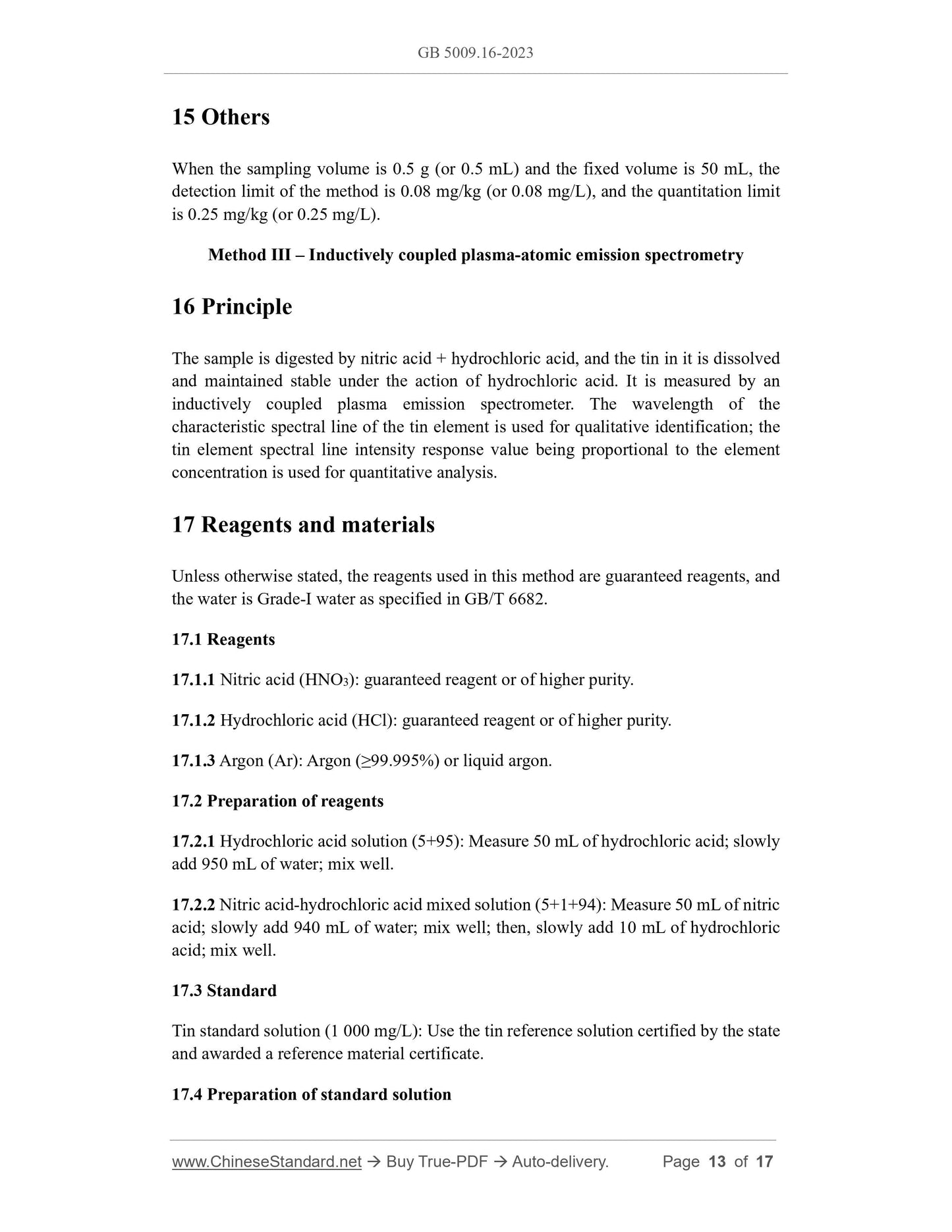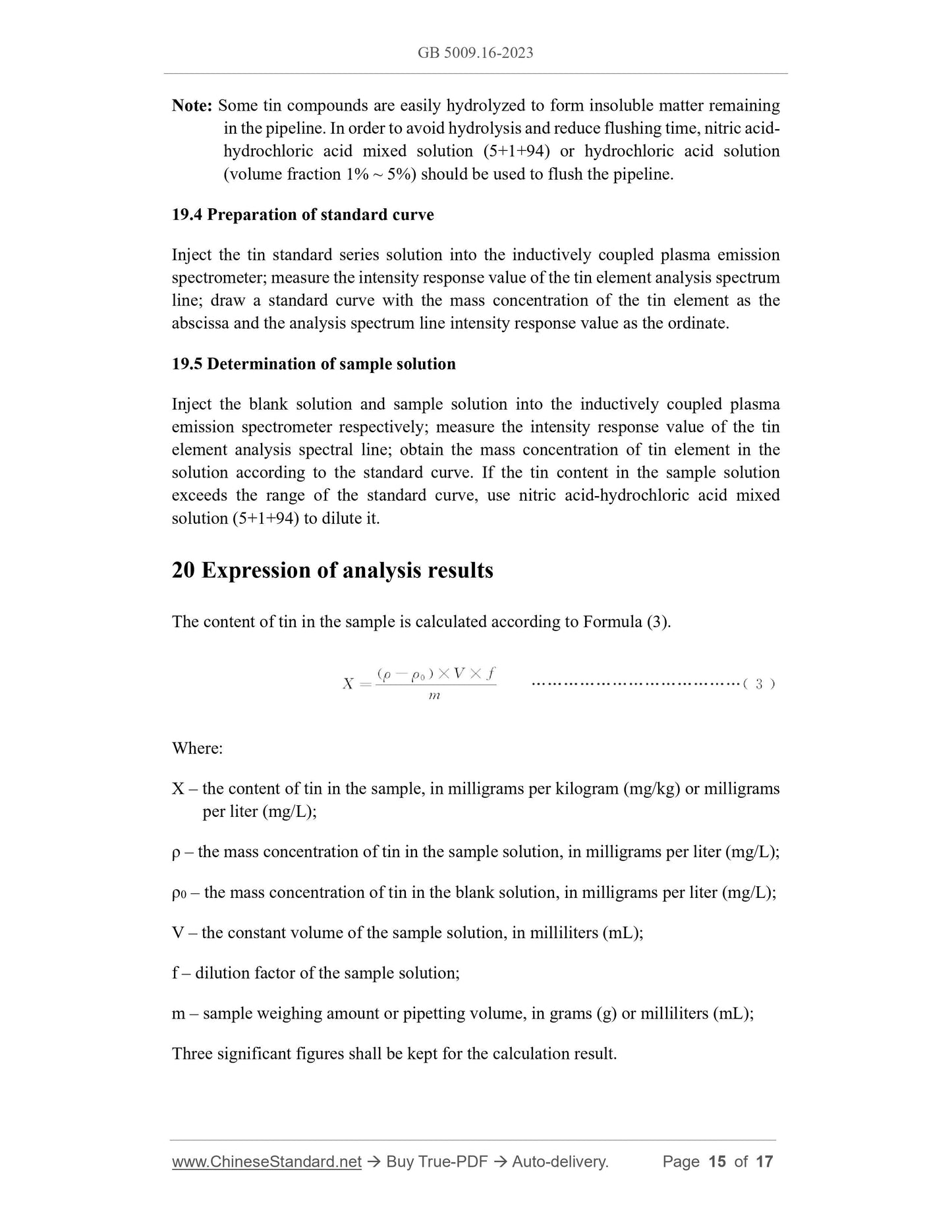1
/
of
10
www.ChineseStandard.us -- Field Test Asia Pte. Ltd.
GB 5009.16-2023 English PDF
GB 5009.16-2023 English PDF
Regular price
$215.00
Regular price
Sale price
$215.00
Unit price
/
per
Shipping calculated at checkout.
Couldn't load pickup availability
GB 5009.16-2023: National food safety standard - Determination of tin in foods
Delivery: 9 seconds. Download (and Email) true-PDF + Invoice.Get Quotation: Click GB 5009.16-2023 (Self-service in 1-minute)
Newer / historical versions: GB 5009.16-2023
Preview True-PDF
Scope
This Standard specifies the methods for the determination of tin in foods by hydrideatomic fluorescence spectrometry, inductively coupled plasma mass spectrometry and
inductively coupled plasma-atomic emission spectrometry.
This Standard applies to the determination of tin in foods.
Method I – Hydride atomic fluorescence spectrometry
Basic Data
| Standard ID | GB 5009.16-2023 (GB5009.16-2023) |
| Description (Translated English) | National food safety standard - Determination of carmine cochineal in foods |
| Sector / Industry | National Standard |
| Classification of Chinese Standard | X09 |
| Word Count Estimation | 6,687 |
| Date of Issue | 2023-09-06 |
| Date of Implementation | 2024-03-06 |
| Issuing agency(ies) | National Health Commission of the People's Republic of China, State Administration for Market Regulation |
| Summary | This standard specifies the liquid chromatography method for the determination of cochineal in food. This standard applies to the determination of cochineal in food. |
Share
